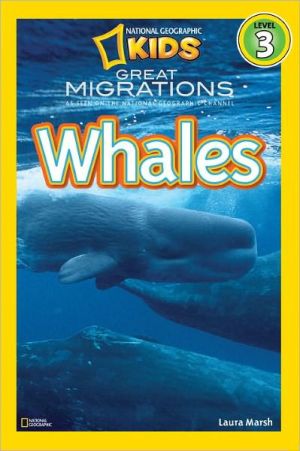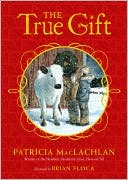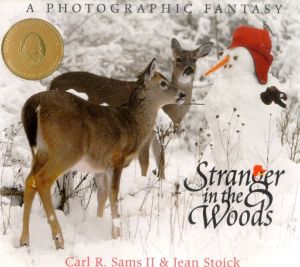Great Migrations: Whales (National Geographic Readers Series)
Over the course of their 70-year lifespan, sperm whales will easily travel the circumference of the Earth in search of food and the need to breed and find a mate. Males will travel as far north as the Bering Sea and as far south as Antarctica in order to find enough food to sustain their ways of live—up to 700 squid a day! Along the way, these massive beasts battle 30-feet-long giant squids, and each other, to sustain their ways of life.
Search in google:
Over the course of their 70-year lifespan, sperm whales will easily travel the circumference of the Earth in search of food and the need to breed and find a mate. Males will travel as far north as the Bering Sea and as far south as Antarctica in order to find enough food to sustain their ways of live—up to 700 squid a day! Along the way, these massive beasts battle 30-feet-long giant squids, and each other, to sustain their ways of life.
\ Children's Literature\ - Marilyn Courtot\ The National Geographic Channel offered a series titled "Great Migrations" and that in turn resulted in a number of early readers which are more like chapter books. As the note on the inside cover states "Children are naturally curious ....and curiosity is a powerful motivation for reading." Books like this one that provide easy to digest information with excellent full color photographs will answer questions and hopefully create readers. The focus is sperm whales, creatures that live in water, have the largest brains of any mammal and breathe air as well as giving birth to live young that they nurse for up to two years. Males leave the pod anytime after four years, so the pod consists of adult females and their young. Whales migrate very long distances moving from the colder waters to the warmer ones to give birth to their young. Sperm whales eat a lot (up to one ton of food a day) and when they dive they can hold their breath for as long as forty-five minutes. There is a single spread that relates ten interesting facts about sperm whales. Also at the top of several pages there are jokes or puns as an extra added attraction. Whales are one of the animals, like bats, that use echolocation. Whales were almost hunted to extinction, but organizations that focused on saving whales helped with the passage of laws to protect whales from modern day hunters, but pollution of the oceans is still an issue. At the close of the text there is information about web sites where kids can learn more and help protect these denizens of the sea. There is a glossary and index, so young readers could use this book for research and reports. While targeted to young readers, this book would be of interest to most readers and could be used for older students not reading on grade level and also in classes where English is taught as a second language. Reviewer: Marilyn Courtot\ \ \ \ \ School Library JournalK-Gr 3—Dynamic full-color photographs, informative writing, and consistent organization work well together in these volumes. Identified by the publisher as "level 3" easy-to-read books, the material ties in with a National Geographic Channel TV program. Each selection has an eye-catching cover, text grouped under headings, plenty of photos that vary in size, and clear maps. Amazing Animal Journeys explains the migration patterns of zebras, red crabs, and walruses. Butterflies concentrates on migration characteristics of monarch butterflies found in the eastern United States, Canada, and Mexico. A noteworthy series of images document a butterfly emerging from a chrysalis. Elephants turns to the migration habits of African elephants, and sperm whales are the focus of Whales. Along with the many photographs, the fascinating details are supported by boxes of related information, helpful definitions of new terms, and a sprinkling of entertaining jokes/riddles. Animal silhouettes embellish the page numbers. In a few instances, photos have been repeated from volume to volume. Small pictures are a helpful accompaniment to the glossary definitions. These titles have potential as sources for reports, recreational reading for newly independent readers, and attractive browsing items to spark student interest.—Lynn Vanca, Freelance Librarian, Akron, OH\ \








